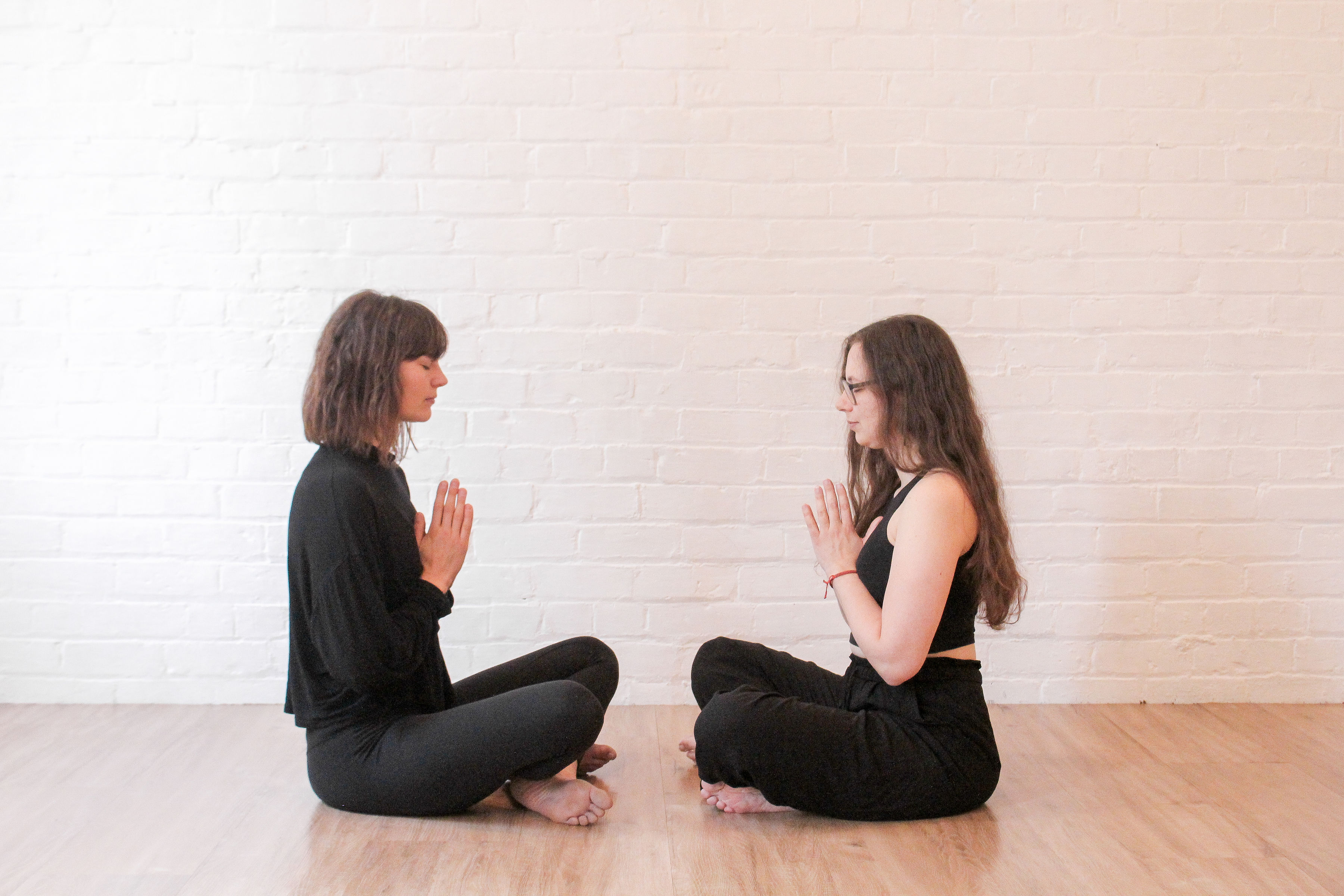
Meditation sounds simple, doesn’t it? You sit down, close your eyes, watch your breath and that’s it. Well. Not for me. Most likely not for you. And certainly not for everybody else. I have clients reaching out for help because they’ve been dabbling in meditation for years. They know all the benefits yet they just can’t make it into a regular and sustainable habit. If that is you, keep on reading – I’m about to spill the tea on some simple steps that will make a world of a difference to your meditation practice.
1 Where do you meditate?
Do you just close down your eyes wherever you are when you find five minutes to meditate? Our brains love consistency. When you return to the same room or corner over and over again your brain will learn that it’s time to meditate – and allow you more easily to bring some space between you and your endless to-do list. What can you do to make the most out of that fact? Maybe you can declare a corner in your home as your meditation area that you come back to every morning or evening. If you’re usually meditating in the office, maybe there’s an area that’s not your desk? Get creative!
2 Do you have a meditation ritual?
Every time I mention a meditation ritual, people think of monks in orange robes, chanting mantras and burning hundreds of incense sticks at once. While that is certainly a ritual, it doesn’t mean that you can’t benefit from your very own version of it. A ritual is a habit that we perform with a lot more presence than our usual to-dos. One way to get your body and brain into a sense of presence is to light a scented candle or switch on an essential oil diffuser. Not only is this a habit, that, done with presence, will allow you over time to settle into your meditation practice more easily. The scent is also a signal for your brain that it’s time to meditate. The more consistent you are with this, the more your brain will associate the smell with “slow down, we’re going to become still”.
3 How do you sit for meditation?
How we place our physical body when we meditate has a huge influence on how we feel throughout and after the practice. The rule of thumb that I like to give my clients is balance: use some effort to signal the brain that this is not nap time, and balance it with a lot of ease to signal the nervous system that it’s time to slow down. Start with your sit bones: can you tilt the pelvis forward and backward until you find a connection of your sit bones to whatever you’re sitting on (cushion and chairs are the usual props of choice)? Relax your legs. If you’re meditating on a chair, place the soles of your feet firmly on the ground and keep the knees at a 90-degree angle. Find a straight spine, neither overarching nor rounding in the lower back. Relax your belly and pelvic floor, soften the shoulder blades, unclench the jaw and loosen the forehead: Now you’re ready to practice.
4 Wait – We don’t meditate quite yet?
Yes, you’ve read that right. We prepared the space and the body, what else do we need? The one thing that will make the biggest difference to how sustainable your meditation practice will become: Your breath.
Did you ever realize how your breath changes when you’re in a stressful situation? It becomes shallow, short, and very fast. The problem is that for a lot of people this is not only a usual occurrence – it’s the only way their bodies and nervous systems operate. And it’s certainly not the best point to launch into meditation. The good news is that your body also works the other way around: by changing your breath you can switch your body, nervous system, and mind into a more restful state.
Meditation without a prior breath practice is like starting a run after an 8-hour day at your desk without warming up: if you’re lucky it works in the moment, but it’s not a sustainable habit. If you don’t have any experience with breath practices, start by breathing into your belly for a couple of minutes (you might want to place your hand on the lower abdomen as a physical reminder). Once you’ve done that for a couple of days, start to control the breath into a relaxation rhythm: Inhale for four, hold the breath in for two, exhale for four, and hold the breath out for two. You can switch to multiples of the rhythm, depending on how your breath is doing. Before settling into meditation, take the breath count down to a 2-1-2-1 rhythm. After a couple of rounds let go of any counting. And here you are: perfectly prepared for a sustainable meditation practice.
Start implementing these steps now, don’t put it off until tomorrow (which, we all know, never comes) – and watch your meditation habit unfolding.

